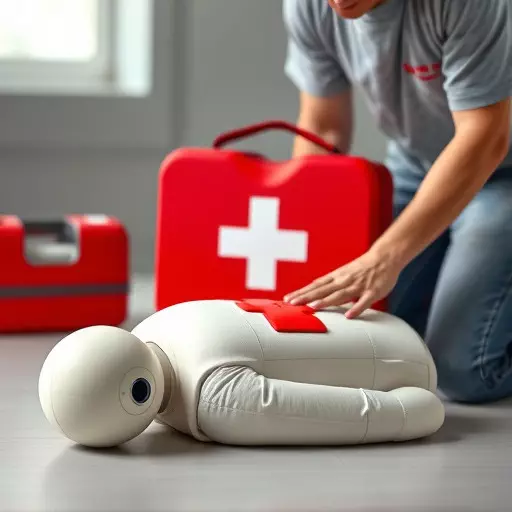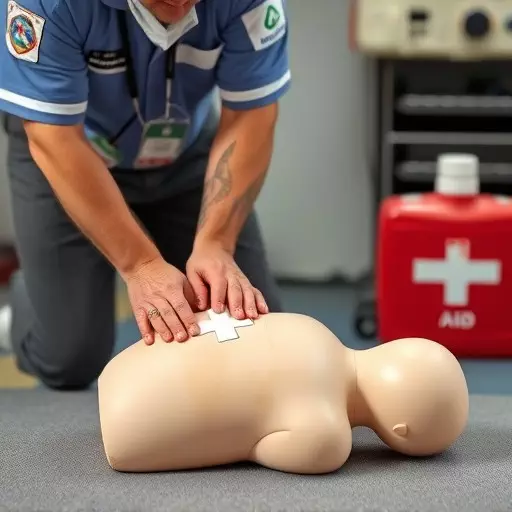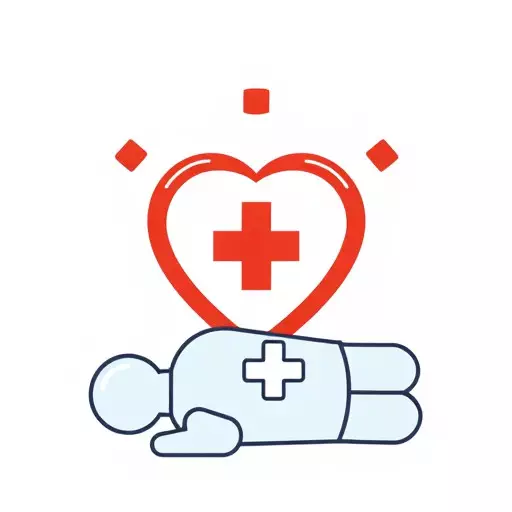Shock is a medical emergency requiring swift action. Basic Life Support (BLS) and Cardiopulmonary Resuscitation (CPR) training equip individuals to recognize shock symptoms like rapid breathing and disorientation, enabling them to provide critical care until professional help arrives. First aid certification, including BLS and CPR, is crucial for both organizational staff and the general public, ensuring effective response to life-threatening emergencies like shock.
In the event of a shock, every second counts. This comprehensive guide delves into the critical aspects of managing shock, equipping you with essential knowledge for effective first aid. From recognizing symptoms and understanding causes to mastering basic life support (BLS) and CPR techniques, this article ensures you’re prepared. Additionally, explore the importance of first aid certification requirements, highlighting the key steps in providing immediate care. Enhance your skills with our insights on BLS training and become a vital resource for unexpected emergencies.
- Understanding Shock: Symptoms and Causes
- Basic Life Support and CPR for Shock Patients
- First Aid Certification Requirements: What You Need to Know
- Managing Shock: Key Steps in Providing Immediate Care
Understanding Shock: Symptoms and Causes

Shock is a serious medical condition that can be caused by various factors, often resulting from an injury or severe illness. Recognizing the symptoms early is crucial for providing effective first aid and potentially saving a life. Common signs of shock include rapid and shallow breathing, a fast heart rate, pale and cold skin, and confusion or disorientation. In some cases, individuals may experience fainting or a dramatic drop in blood pressure.
The underlying causes of shock can vary widely. It often occurs due to severe bleeding from traumatic injuries, such as car accidents or lacerations. Sepsis, a severe response to an infection, is another significant contributor. Additionally, heat-related illnesses like heatstroke and dehydration can lead to shock. Basic Life Support (BLS) training, including CPR and first aid certification, equips individuals with the skills to recognize these symptoms and administer appropriate initial care while awaiting professional medical assistance. Understanding the causes and symptoms of shock is a vital aspect of first aid and CPR training, ensuring that bystanders can provide crucial support until emergency services arrive.
Basic Life Support and CPR for Shock Patients

For patients experiencing shock, rapid intervention is crucial. Basic Life Support (BLS) and Cardiopulmonary Resuscitation (CPR) are fundamental first aid skills that can significantly improve outcomes in such critical situations. BLS training equips individuals with the knowledge and techniques to recognize and respond to life-threatening emergencies, including shock. It involves assessing the victim’s condition, performing chest compressions, and delivering rescue breaths if needed.
CPR is a critical component of first aid for shock patients. This life-saving technique involves a series of steps that include chest compressions at a specific rate and depth, combined with rescue breathing to restore proper circulation and oxygenation. First aid and CPR training are essential components of any comprehensive first aid certification program, as they empower individuals to take immediate action in emergency situations, potentially saving lives until professional medical help arrives.
First Aid Certification Requirements: What You Need to Know

In order to effectively provide first aid in case of shock, it’s crucial to have proper certification. First aid and CPR training, including basic life support (BLS), equips individuals with essential skills to recognize and respond to shock appropriately. Many organizations and workplaces mandate specific levels of first aid certification for their staff, ensuring a prepared response to medical emergencies.
The requirements vary based on location and industry, but generally, basic first aid and CPR training is recommended for the general public. For professionals in healthcare or emergency services, more advanced certifications like Advanced Cardiovascular Life Support (ACLS) may be necessary. These courses teach participants how to assess and manage shock, perform chest compressions, use defibrillators, and administer other interventions critical in stabilizing a patient until professional medical help arrives.
Managing Shock: Key Steps in Providing Immediate Care

Managing shock is a critical component of first aid and CPR training. The key steps in providing immediate care involve recognizing the symptoms – rapid breathing, pale skin, anxiety, or loss of consciousness – and acting swiftly. Call for emergency medical services while assessing the patient’s condition, ensuring they are safe and comfortable, and encouraging them to breathe deeply if they are conscious.
Administering basic life support (BLS) techniques such as chest compressions and rescue breathing can be lifesaving. If the patient is not breathing normally, start CPR until professional help arrives. Additionally, first aid certification requirements often emphasize the importance of maintaining a clear airway and treating any visible injuries before addressing shock. Ensure you have the necessary skills through regular training to respond effectively in such critical situations.
